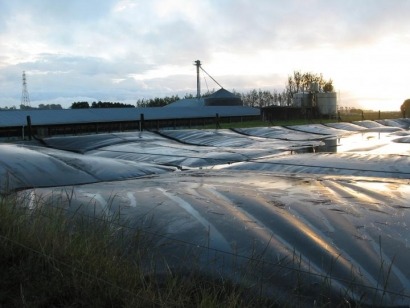
An innovative biogas system, developed at NIWA Hamilton, has been embraced by the Australian pork industry. It provides an alternative electricity and heating source and was developed by New Zealand's National Institute of Water and Atmospheric Research (NIWA).
The Australian pork industry association, Australian Pork Limited (APL), has collaborated with NIWA and several pork producers to design and build covered anaerobic pond based biogas systems. So far, four systems are currently at various stages of construction.
NIWA worked in collaboration with the New Zealand Pork Industry Board and Energy Efficiency and Conservation Authority (EECA) on the New Zealand prototype.
NIWA identified that anaerobic digestion in covered waste ponds holds significant potential to reduce odour and greenhouse gas (GHG) emissions, while providing biogas as a local energy resource.
Australian pig farmers are incentivised to use the technology to reduce farm GHG emissions. The recently introduced Carbon Farming Initiative (CFI) allows farmers and land managers to earn carbon credits by storing carbon or reducing greenhouse gas emissions from the agricultural sector. These credits can then be sold to businesses with an emission liability, such as fossil fuel power plants or chemical processors.
"The system makes good sense," says NIWA research engineer Stephan Heubeck, who has driven the development of the technology. "Anaerobic digestion in covered ponds holds significant potential to reduce odour and greenhouse gas emissions from the farming sector. At farm scale, this energy resource can be used for heating and/or to generate electricity."
The first pond based biogas system that NIWA designed was a purpose-built 7000m3 covered anaerobic pond for Steve Lepper's piggery in Taranaki.
NIWA's simple and low cost design has proven effective and reliable over the last two years. At the Lepper piggery, the biogas is used for electricity generation and heating in a combined heat and power unit (CHP).
As well as providing the majority of the piggery's electricity needs during daytime, waste heat from the generator is used in a reticulated hot water system for keeping young pigs warm.
Steve Lepper expects to recoup his $120,000 investment ($30,000 of which came from an EECA grant) within three years. The Lepper biogas system won the Small-Medium Business category in EECA awards in 2010.
“NIWA is actively promoting new ideas and concepts that enhance New Zealand's economic and environmental performance. New Zealand's primary sector has much to gain from a bolder adoption of covered anaerobic pond based biogas technology,” said the Institute in a press statement on Monday.
[Inset: The 7000 cubic metre covered biogas pond at Steve Lepper’s piggery in Taranaki. Courtesy of Dave Allen, NIWA]
For additional information:

